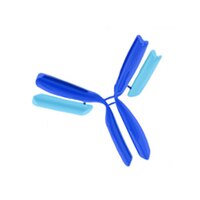NA46 Sigma-AldrichAnti-p300 Mouse mAb (NM-11)
This Anti-p300 Mouse mAb (NM-11) is validated for use in Frozen Sections, Immunoblotting, Immunofluorescence, Immunoprecipitation, Paraffin Sections for the detection of p300.
More>> This Anti-p300 Mouse mAb (NM-11) is validated for use in Frozen Sections, Immunoblotting, Immunofluorescence, Immunoprecipitation, Paraffin Sections for the detection of p300. Less<<Anti-p300 Mouse mAb (NM-11) MSDS (material safety data sheet) or SDS, CoA and CoQ, dossiers, brochures and other available documents.
Recommended Products
概述
| Replacement Information |
|---|
重要规格表
| Species Reactivity | Host | Antibody Type |
|---|---|---|
| H, R | M | Monoclonal Antibody |
价格及供货情况
| 产品目录编号 | 库存情况 | 包装 | 数量 / 包装 | 价格 | 数量 | |
|---|---|---|---|---|---|---|
| NA46-100UGCN |
|
塑胶安瓿;塑胶针药瓶 | 100 μg |
|
— |
| Description | |
|---|---|
| Overview | Recognizes the p300 protein in A431, HeLa, and ML-1 cells. |
| Catalogue Number | NA46 |
| Brand Family | Calbiochem® |
| Product Information | |
|---|---|
| Form | Liquid |
| Formulation | In 0.05 M sodium phosphate buffer, 50% glycerol. |
| Positive control | A431, HeLa, or ML-1 cells |
| Preservative | None |
| Quality Level | MQ100 |
| Physicochemical Information |
|---|
| Dimensions |
|---|
| Materials Information |
|---|
| Toxicological Information |
|---|
| Safety Information according to GHS |
|---|
| Safety Information |
|---|
| Product Usage Statements |
|---|
| Packaging Information |
|---|
| Transport Information |
|---|
| Supplemental Information |
|---|
| Specifications |
|---|
| Global Trade Item Number | |
|---|---|
| 产品目录编号 | GTIN |
| NA46-100UGCN | 04055977227574 |
Documentation
Anti-p300 Mouse mAb (NM-11) MSDS
| 职位 |
|---|
Anti-p300 Mouse mAb (NM-11) 分析证书
| 标题 | 批号 |
|---|---|
| NA46 |
参考
| 参考信息概述 |
|---|
| Dallas, P.B., et al. 1997. Hybridoma 16, 273. <→EMD:if(output-is PDS)→> Shisler, J., et al. 1996. J. Virol. 70, 68. Wang, H.G., et al. 1995. J. Virol. 69, 7917. Banerjee, A.C.,et al. 1994. Oncogene 9, 1733. Eckner, R., et al. 1994. Genes Dev. 8, 869. Abraham, S.E., et al. 1993. Oncogene 8, 1639. Wang, H.G., et al. 1993. J. Virol. 67, 476. Howe, J.A., and Bayley, S.T., 1992. Virology 186, 15. Rikitake, Y., and Moran, E., 1992. Mol. Cell. Biol. 11, 2826. Yaciuk, P., and Moran, W., 1991. Mol. Cell. Biol. 11, 5389. Egan, C., et al. 1988. Mol. Cell. Biol. 8, 3955. Yee, S. and Branton, P., 1985. Virology 147, 142. <→EMD:endif()→> |









